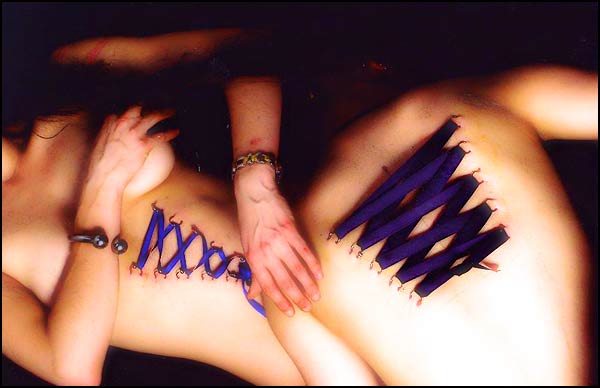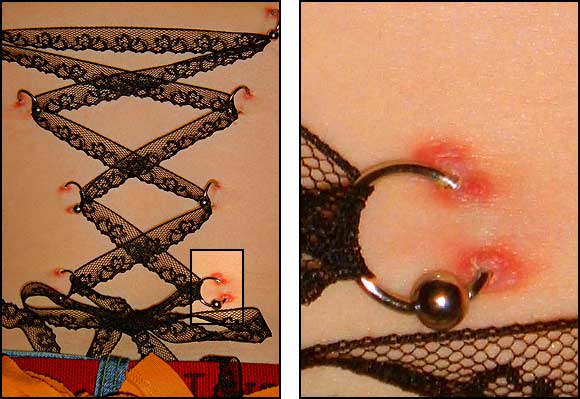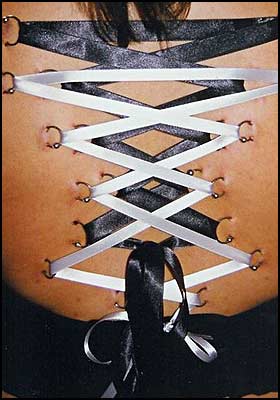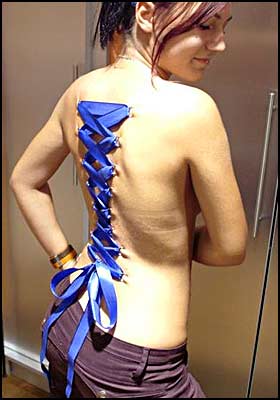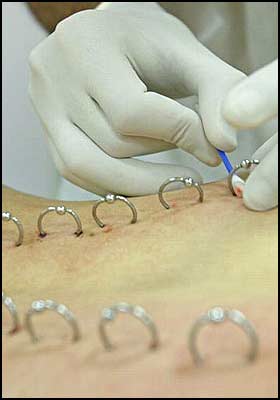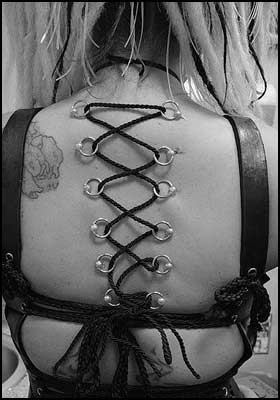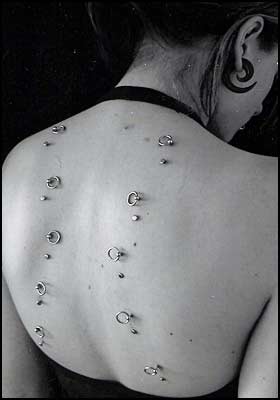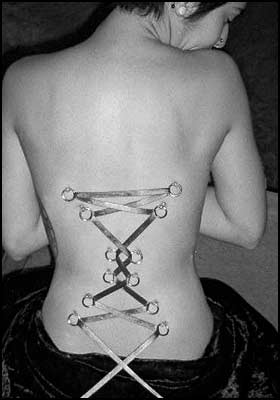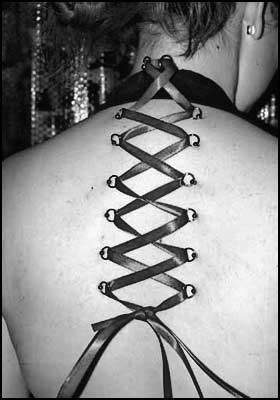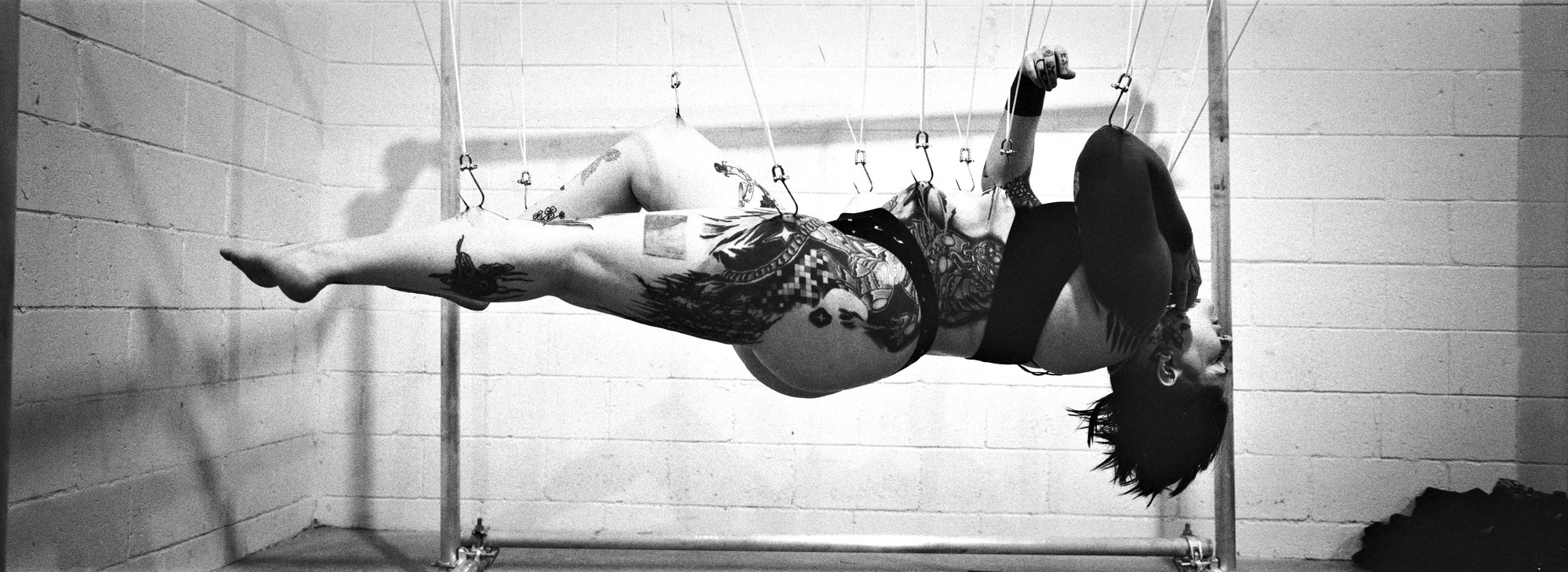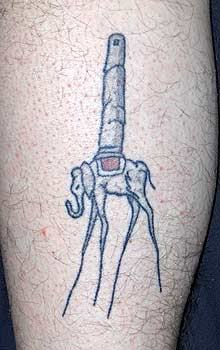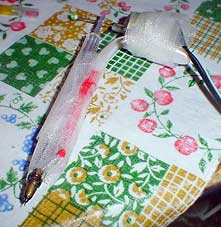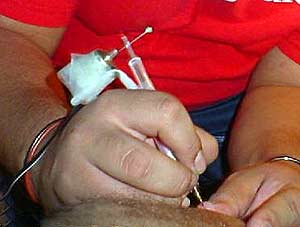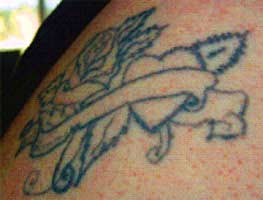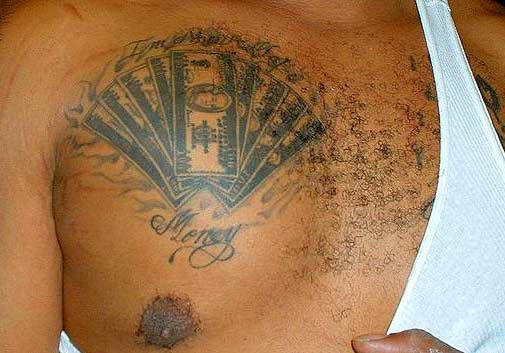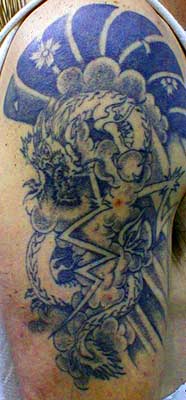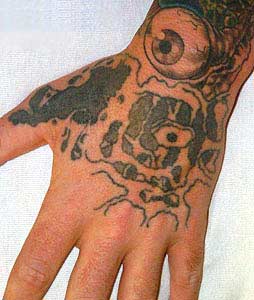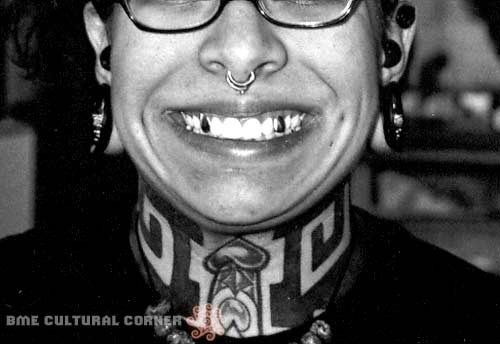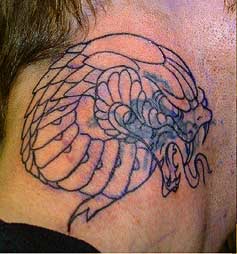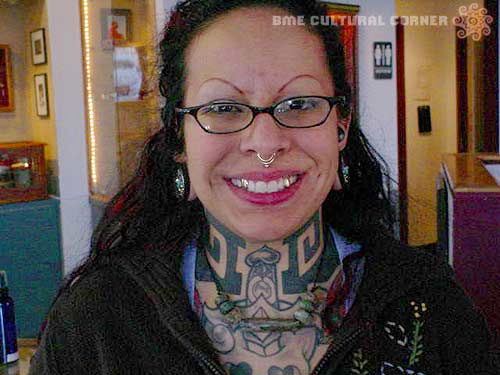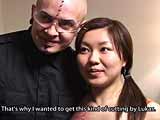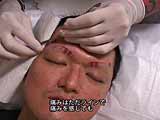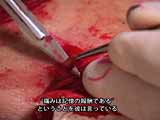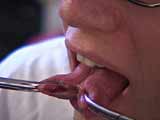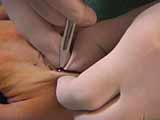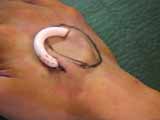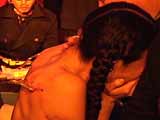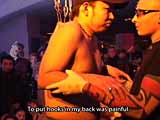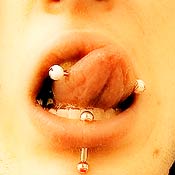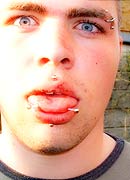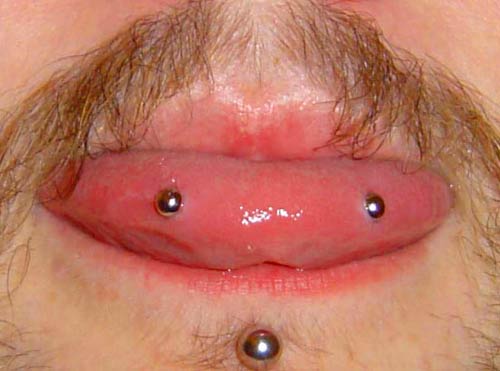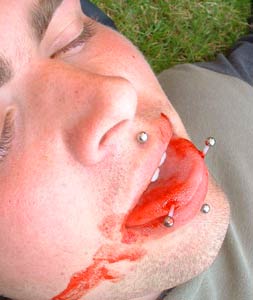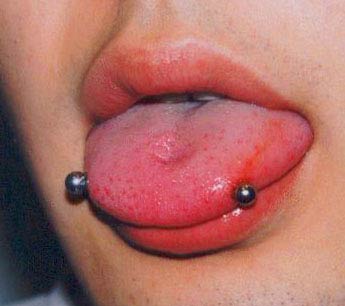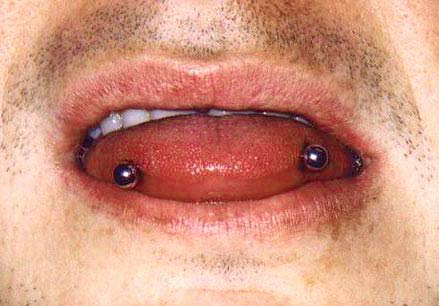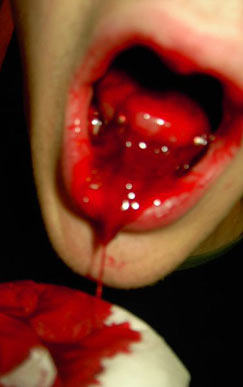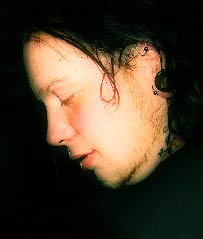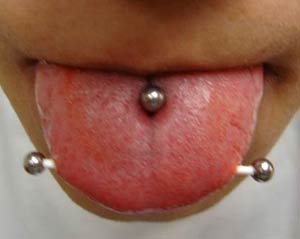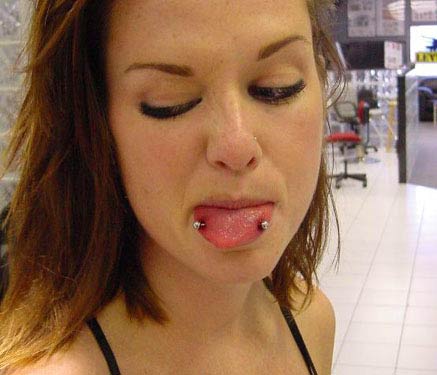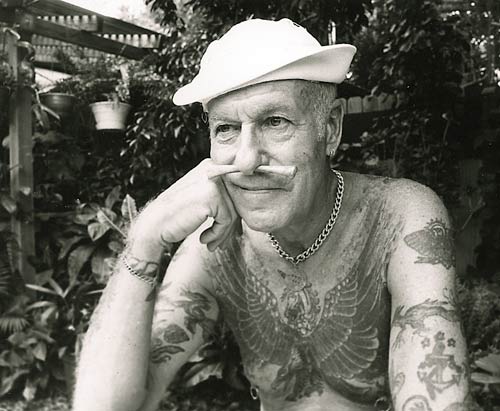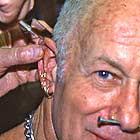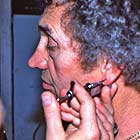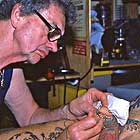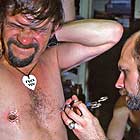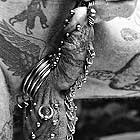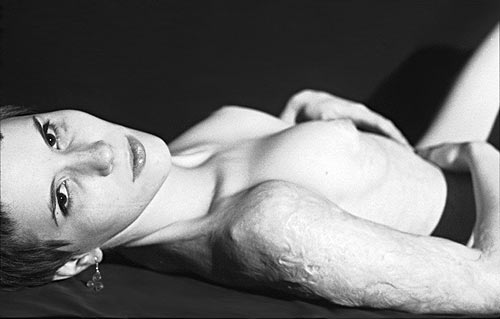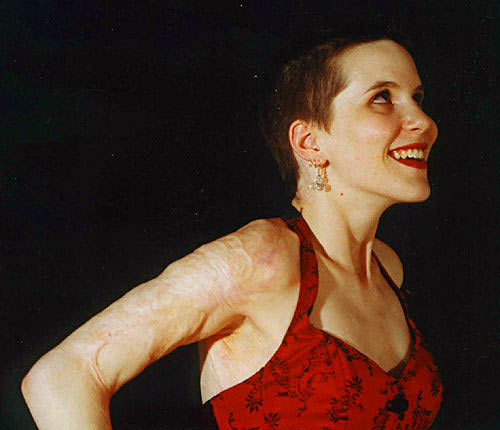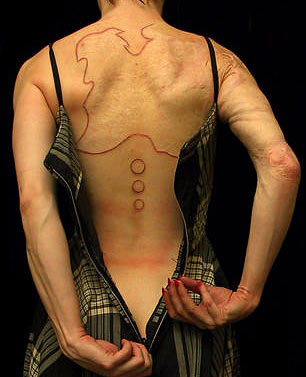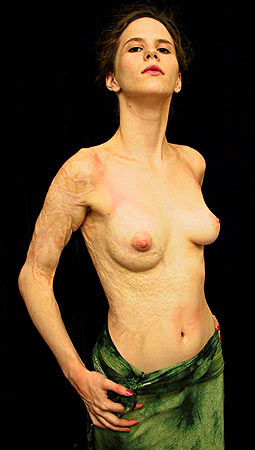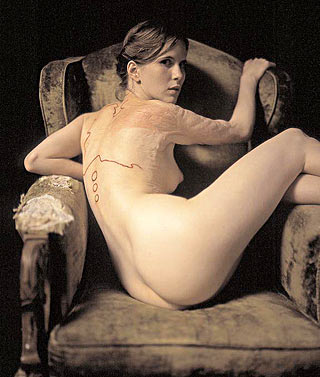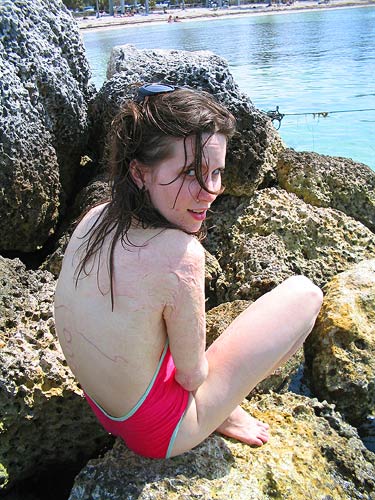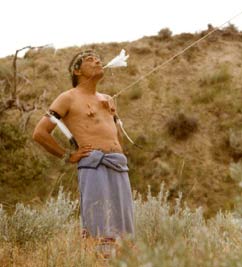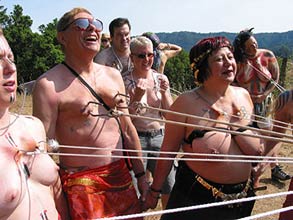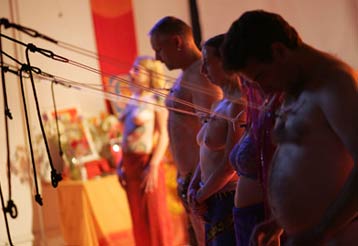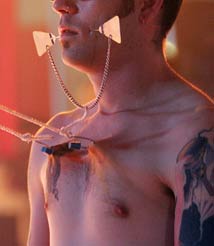
Waivers and Releases
for Tattoo and Piercing Studios
Dear Marisa,
This is a great column.
I personally am curious about waivers. I have heard that a lot of waivers used in daily practice in studios wouldn’t stand up in court in the slightest. What would a waiver need to be considered binding?
Issues such as contraction of disease, reaction to pigment, the tattoo not looking ‘exactly’ like the client had expected are all things which I know I worry about being liable for….
Twwly
|
|
Good question, Twwly!
Waivers can be a great tool for tattoo and piercing shops to protect themselves from customer’s with “buyer’s remorse” and even law suits, or at least limit their potential liability. Whether they’re worth the paper they’re on, however, basically comes down to five things:
- The state, county and city where the shop is
located.
- The capacity of the person signing the release,
i.e., whether he/she is drunk or a minor.
- The proper drafting of the release.
- Whether the claim against the shop or artist is
based on negligence or gross negligence.
- Whether the procedure covered by the waiver is legal. (Tattooing is still outlawed in Oklahoma.)
But first, what is a waiver or release in the context of tattoo and piercing studios?
A waiver or release is a contract that the client, or parent of the minor client, signs promising to release from liability (i.e., not to sue) the studio for harm that may arise from the tattoo or piercing. The terms waiver and release are often used interchangeably, but there is a distinction: a waiver is an agreement signed before any harm occurs and a release is signed after the harm that could result in a claim has occurred. In non-legal terms, it’s all about CYA — covering your ass.
| |

Tattoo Release |

Piercing Release |
|
Above are sample release forms for tattoo and piercing studios. If you use them, get them reviewed by local counsel first. You may want to edit them to include more (or less — but CYA) risks and medical conditions, or make other changes to suit your studio’s needs.
|
Waivers can protect studios from suit for all different kinds of potential harm, such as infections, scarring and keloiding, allergic reactions to ink or green soap, a kanji placed upside down and, my favorite, misspelled tattoos The simple fact of having signed a waiver and release can discourage many clients from seeking to sue you in the event of a problem. Similarly, a client who goes as far as to talk to a lawyer will find that most lawyers will turn them down as a client if there exists a well-written waiver and release — unless the circumstances are particularly nasty, the lawyer won’t view the case as worth their time and effort. And in the event you do end up in court (or even small claims court), the client’s executed waiver and release will be a strong defense.
GOOD PRACTICE TIP: In the case of spelling a tattoo, it is always a good idea to have the client print out themselves the names or words to be spelled — a good location for this is the back of the waiver or release and have the client initial the spelling.
For clients of piercing and tattoo shops, this means you must be well educated in the risks of the trade and accept those risks before signing your rights away. You always have the option of going to another studio with no waiver to sign or to one that is less restrictive on limiting liability. Or simply don’t get the mod.
KNOW YOUR LOCAL LAW
Laws differ from state to state, city to
city, county to county. Thus, writing any kind of overview of US law is like
hitting that fifth hour of a non-stop tattooing session — it’s outright painful.
(I speak from experience on both counts.) But unlike getting a backpiece, where
the only thing to do is just deal with the pain, here I can lessen the legal
load by providing my own CYA clause:
Get a local lawyer to draft or at least review the free sample waivers provided in this article (Perhaps get other shops nearby to share this cost with you). Do not rely solely on this article as legal advice. A waiver and release that does not take into account the specific laws applicable to where your shop is located may not be any protection for you at all. Instead, feel free to think of this as just learning something new to sound smarter at dinner parties.
With that off my shoulders, let’s
get under the skin of tattoo waivers and releases.
Most US states will enforce a waiver or release, although some hold them to a more rigorous standard than others. And at least three states — Louisiana, Montana, and Virginia — have deemed waivers against public policy unenforceable, according to “Liability Waivers” an article on waivers for the health and fitness industry by Dr. Doyice Cotten, co-author of Waivers & Releases for the Health & Fitness Club Industry. The eight states that are most lenient in upholding waivers are Idaho, North Dakota, Michigan, Alabama, Georgia, Tennessee, South Carolina, and Maryland. While Cotten based his research on sports-related waiver cases, the findings could be analogized and extended to tattoo and piercing waivers.
Other states have their own peculiarities. In California, for example, an express waiver of the provisions of Section 1542 of the Civil Code may be necessary to obtain a waiver and release that is effective against future claims. It is standard practice in California for a waiver and release to contain a provision such as the following:
(If you are a resident of the State of California) I agree to waive the provisions of Section 1542 of the Civil Code of the State of California, which provides as follows:
A GENERAL RELEASE DOES NOT EXTEND TO CLAIMS WHICH THE CREDITOR DOES NOT KNOW OR SUSPECT TO EXIST IN HIS FAVOR AT THE TIME OF EXECUTING THE RELEASE, WHICH IF KNOWN BY HIM MUST HAVE MATERIALLY AFFECTED HIS SETTLEMENT WITH THE DEBTOR.
I understand that section 1542 gives
me the right not to release existing claims of which I am not now aware,
unless I voluntarily chose to waive this right. Having been so apprised, I
nevertheless hereby voluntarily elect to, and do waive the rights described in
section 1542, and elect to assume all risks for claims that now exist in my
favor, known or unknown, from the subject of this Waiver and Release. I
acknowledge that I have had the opportunity to consult with legal counsel of
my own choosing and to have the terms of this Waiver and Release fully
explained to me; that I am not executing this Waiver and Release in reliance
on any promises, representations or inducements other than those contained
herein; and that I am executing this Waiver and Release voluntarily, free of
any duress or coercion.
GOOD PRACTICE TIP: Know the laws that apply to you. Many states, cities, counties and local munincipalities now regulate tattooing and piercing in some way. You should get a copy of these statutes for your reference and keep them in your shop as well as provide them to any artist working in your shop. And don’t rely on these laws as to not change. Tattooing and piercing, as it has become more mainstream, has attracted greater attention-and motivated some people to seek greater regulations and restrictions on it from restricting who, what and where a person may be tattooed to zoning laws on where you shop may be located. It’s your responsibility to stay up on changing laws that may affect you. It’s much easier and effective to counter an attempt at increased regulation of your profession before such laws are enacted [But that’s for another article.]
NO DRUNKS AND MINORS
Whether your state court will enforce the waiver or release is going to depend on who is signing it. “Capacity” of the person getting the tattoo or piercing is key, according to attorney Ronald D. Coleman of the Coleman Law Firm and general counsel of the Media Bloggers Association. He says:
“At least as important as any issue having to do with the text of the release form is that the tattoo shop owner must be confident that the person getting that tattoo is not impaired and is an adult. [This is “capacity.”] It is not enough for the release form merely to recite the fact that the person signing it contends he is not impaired; if the tattoo shop owner’s own non-expert observation suggests an impairment, this term of the contract likely will ‘not be worth the paper it’s printed on.’ As a general rule, the law will uphold substance, not form.”
What this means is, if a person staggers into your shop drunk, reeking of whiskey, and asks for a Britney Spears portrait tattoo on his chest — even if he’s willing to sign away all liability — he just may come back and sue you when he sobers up and possibly win. “Oops, I did it again” is not a valid legal defense.
Less obvious, a client who speaks fractured English may not be bound by a waiver or release that is written in English. So, if you have a clientele that speaks Spanish, for example, it would be a good idea to have on hand a form of release that is written in Spanish.
It also means that an attractive young woman who could easily pass for 18 years of age and wants to pierce her navel must still provide ID showing she’s the age of consent for this type of piercing in your state. The R. Kelly “she looked 18” excuse just wont cut it unless there’s proof or a parent around.
GOOD PRACTICE TIP: Photocopy the ID’s supplied by the client and parent (if applicable) and attach to the copy of the waiver and release you keep on file. Educate yourself to be able to spot a fake ID or driver’s license as well — and if you are in doubt as to its validity, turn the client away!
Which raises the question: Can parents, signing a tattoo or piercing release form on behalf of their child, thereby, sign away their child’s rights to any damages arising from the procedure?
The answer is yes and no. Again, it all depends on the state, city and county in which your shop is located.
Looking at cases where parents have signed releases for horse riding or ski lessons, cheerleading practices, and a variety of sporting and extracurricular activities, the courts are divided across the US on whether to enforce waivers signed on behalf of minors. For example, a Washington court refused to uphold a ski school’s release even after the mother of a child who was injured during ski lessons signed the agreement releasing the school from any liability for negligence. That court held that parents generally do not have the right to waive their child’s own future action for present injuries sustained from a third party’s negligence. Yet, in a similar case in Colorado, that state’s high court upheld a waiver signed by a parent of an child injured while skiing and found for the defense.
This Colorado case and many other cases that have upheld waivers and releases signed by parents for their minor children cite the 2000 Supreme Court decision of Troxel v. Granville for the principle that “the interest of parents in the care, custody, and control of their children is perhaps the oldest of the fundamental liberty interests recognized by [the US Supreme] Court.”
Therefore, having a child’s belly button pierced is a right that many parents have — as noted, for example, in Connecticut, under General Statutes sec. 19a-92g, explicitly permitting a parent to consent to body piercing of an unemancipated minor child. Just keep in mind that not all state legislatures are as evolved as Connecticut’s.
GOOD PRACTICE TIP: As a general rule, it is probably not a good idea to tattoo a minor — even with a parent’s consent, unless you know the parties very, very well. Whereas a piercing is “temporary”, a tattoo is more permanent and difficult to remove if the wearer or parent later regrets the decision. So, why risk it?
GET THE LANGUAGE RIGHT
Even those state courts that uphold releases
are still going to check to see if the waiver or release is properly drafted.
[While I attempted to make the sample agreements as detailed as possible, they
cannot be considered properly drafted until signed off by an attorney
knowledgeable of your local law.]
The problem with many releases is that they are overly broad. Tons of Internet sites offer free legal forms, but I have yet to find one that fully covers the specifics of tattoo and piercing studios.
I did find one that made me laugh on Overlawyered.com that was created by tattooist Pat Fish. In Pat’s release, she also includes the line “I am not a lawyer, nor do I work for one.” For those lawyers that want ink from Pat, she makes them circle the provision and next to it write “But I am ashamed.”
Clauses for professional self-loathing aside, waivers should be specific as to what is involved and what can go wrong. If you own a studio that provides both tattoo and piercing services, have a separate release for each, and have each list their specific risks. For example, the samples provided in the article include risks such as scarring and infection. You could modify the samples so as not to scare away your clients, but like I said, it’s all about CYA.
Another CYA clause, is one that requires the client to properly care for the tattoo or piercing while it’s healing. But Robert Coleman points out that this provision is “fairly worthless if [the client] has not been properly instructed in that care.” He adds, “It is a good idea to give the customer written instructions on care and for him to sign a separate receipt proving that he received them.”
GOOD PRACTICE TIP: Aftercare instructions should be clearly posted on the wall in the studio in a visible and conspicuous place. Each client should receive a printed copy of aftercare instructions BEFORE commencing the tattoo. Upon completion of the tattoo or piercing, the artist should review the aftercare instructions with the client and ask if there are any questions. Keep a pile of aftercare instructions available in the studio’s lobby/waiting area for clients to take with them.
Coleman also favors considering an attorneys’ fees provision in waivers, requiring the loser of any litigation to pay the other side’s attorneys’ fees and costs. “This will certainly discourage meritless litigation. On the other hand, the risks here are fairly obvious.”
An artfully drafted release or waiver with a host of specific provisions on tattooing or piercing is a great line of defense against potential law suits, but the courts will also look to make sure that the client actually read the agreement and understood what they were signing. In my sample waivers, there are lines next to each provision for the client to initial. They are also drafted in clear language, and in readable font, so that you don’t need a law degree or a magnifying glass to read them.
GOOD PRACTICE TIP: Reproduce your waiver and consent form in easily readable type and preferably on a single sheet of paper (printing it on the front and back if necessary) so that the signature is never separated from the waiver itself.
NEGLIGENCE OR GROSS NEGLIGENCE
You’ll also find a provision in my sample
specifically releasing the studio from liability for their own negligence. Some
states, including New York and Delaware, among others, require such language
waiving claims arising from “fault” or “neglect.” Other states don’t require it,
but it may not hurt to have it.
Negligence is failure to exercise due care — care that a reasonable, prudent person would exercise under the same circumstances. On the other hand, gross negligence is the failure to use even the slightest amount of care in a way that shows recklessness or willful disregard for the safety of others. While in some cases ordinary negligence can be waived, gross negligence or intentional misconduct cannot. So what does that mean for tattoo and piercing shops? Where is the line drawn between negligence and gross negligence? No US cases were found where the courts look at this line in the context of tattoo and piercing shops, but we can make a guess for the following scenarios:
Whether a court agrees with these guesses is the real issue — it depends upon an examination of the facts in each circumstance, and a court’s ruling may vary from state to state, county to county. The important point to keep in mind, however, is that no waiver or release can protect you from claims of gross negligence.
GOOD PRACTICE TIP: Do not assume use of a form of waiver or release to absolutely protect you from any claims. It is your responsibility in your shop to institute procedures for all artists and employees to follow to assure that the laws you are subject to are complied with and that procedures to assure the sterility and safety of the application of all tattoos and to prevent the cross-contamination of instruments, surfaces and materials (pigments) is scrupulously followed.
WAIVERS DO NOT COVER ILLEGAL ACTIVITY
According to the basic principles of contract
law, you cannot enforce a contract for illegal activity. Then again, the client
who also engages in the illegality may have little right to sue as well.
With the exception of Oklahoma (which is currently reconsidering its state-wide tattoo ban), tattooing and piercings are legal in the US. However, waivers for heavier modifications, such as tongue-splitting, explicitly outlawed in some states, and other mods that fall under laws prohibiting their practice, including practicing medicine without a license, cannot be protected. Performing these modifications may open you up to criminal charges of assault and battery or worse. Some lawyers may also tell you to ask yourself whether you want to have a document attesting to a potentially illegal activity anyway. But you didn’t hear that from me.
For legal waivers, however, hold on to those documents. The safest bet is to keep them filed away until the statute of limitations for any potential law suit has expired in your state. A statute of limitations is a law that prevents a person from bringing a claim after a fixed period of time has passed — irrespective of the validity or worthiness of the claim. With respect to personal injury, most states require a claim be brought within two years — but that time period may not start to run until the person is aware of the injury giving rise to the claim.
GOOD PRACTICE TIP: Retain copies of releases in a safe place for a minimum of three years, and if practicable, even longer. While statutes of limitations may be only two or three years for most claims likely to be brought, in some instances, the statute preventing a claim may not even begin to run until the person knows that they have a claim against you. For example, if the claim results from your publication of a client’s photo without consent, the statute will run only from the date of publication — which could occur years after the initial tattoo was completed.
Finally, the best advice on waivers or releases: don’t rely on them alone to protect you. As Coleman emphasizes, “Insurance, insurance, insurance!”
GOOD PRACTICE TIP: Understand insurance! If the shop you work at has insurance it may cover the shop-but not you individually as an artist!
And with that comes some sound CYA advice.
Marisa Kakoulas
This article was not intended as legal advice. It is intended for only general information purposes. This article does not create any attorney-client relationship.
Special thanks to Rebekah Harris for her invaluable help in legal research and editing.

Marisa Kakoulas is a New York lawyer, writer, and muse of Daniel DiMattia of Calypso Tattoo, living in Liege, Belgium. She works undercover — or just covered up — as a corporate consultant: proof that tattoos and suits are not mutually exclusive. Her book “Tattoo Law”, an overview of US laws affecting the body modification community, is under way. IAM members can visit Marisa at iam:FREE.
Copyright © 2005 Marisa Kakoulas. Online presentation copyright © 2005 BMEzine.com LLC. Requests to republish must be confirmed in writing. For bibliographical purposes this article was first published online February 27th, 2005 by BMEzine.com LLC in Johannesburg, South Africa.

